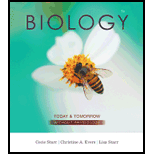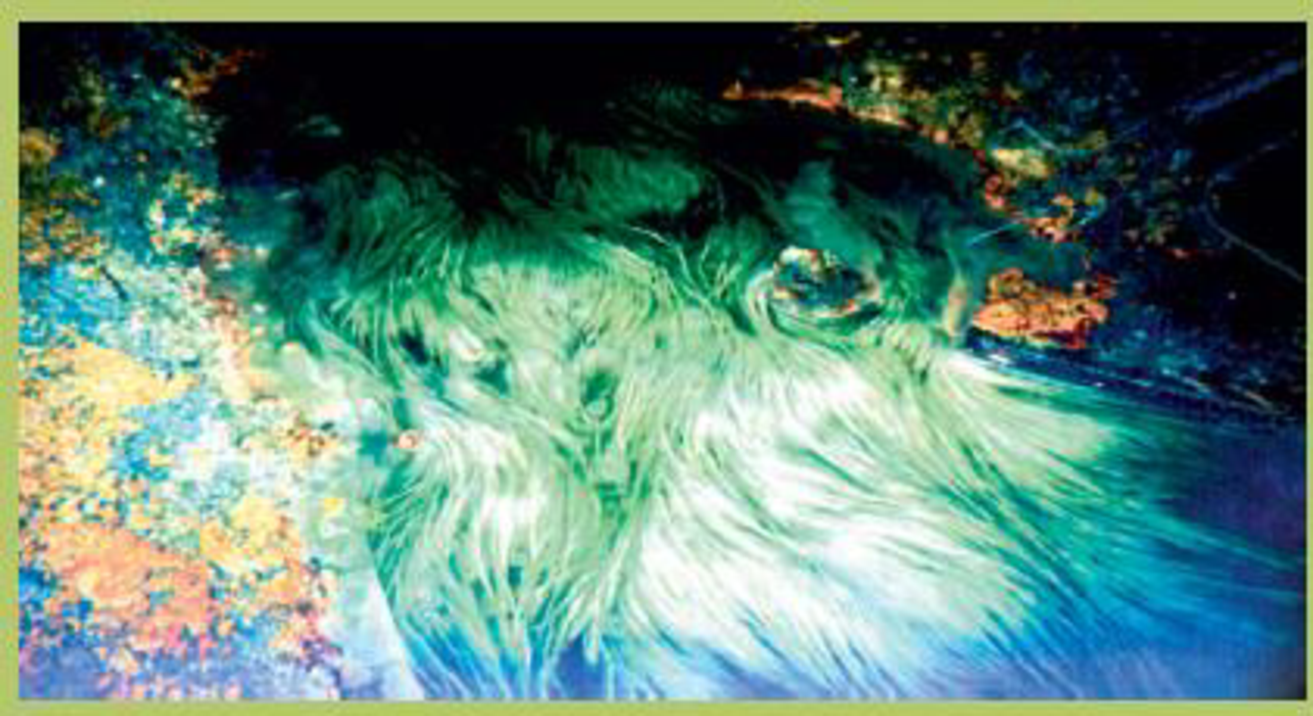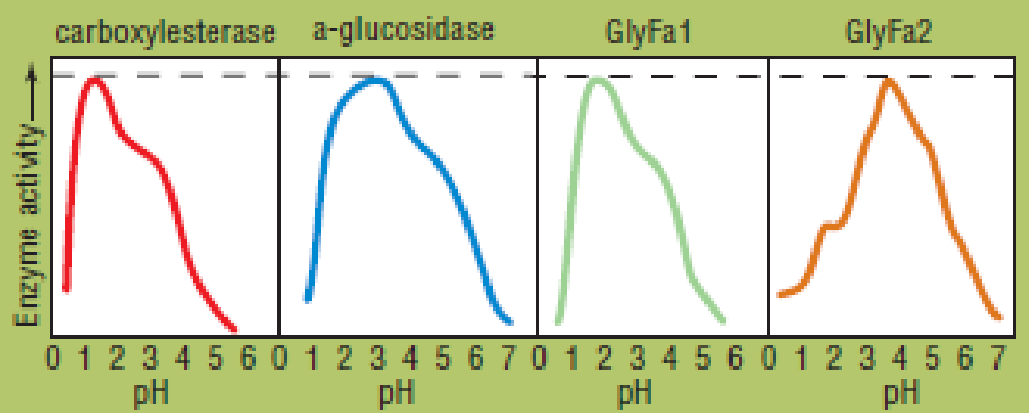
Concept explainers
The genus Ferroplasma consists of a few species of acid-loving archaea. One species, F. acidarmanus, was discovered to be the main component of slime streamers (a type of biofilm) deep inside an abandoned California copper mine (Figure 4.11A).
F. acidarmanus cells use an ancient energy-harvesting pathway that combines oxygen with iron–sulfur compounds in minerals such as pyrite. This reaction dissolves the minerals, so groundwater that seeps into the mine ends up with extremely high concentrations of metal ions such as copper, zinc, cadmium, and arsenic. The reaction also produces sulfuric acid, which lowers the pH of the water around the cells to zero.
Despite living in an environment with a composition similar to hot battery acid, F. acidarmanus cells maintain their internal pH at a cozy 5.0. Thus, researchers investigating Ferroplasma

A. Deep inside one of the most toxic sites in the United States: Iron Mountain Mine, in California. The water in this stream, which is about 1 meter (3 feet) wide in this photo, is hot (around 40°C, or 104°F), heavily laden with arsenic and other toxic metals, and has a pH of zero. Slime streamers growing in it are a biofilm dominated by a species of archaea, Ferroplasma acidarmanus.

B. pH profiles of four enzymes isolated from F. acidarmus. Researchers had expected these enzymes to function best at the cells’ cytoplasmic pH (5.0).
What does the dashed line signify?
Trending nowThis is a popular solution!

Chapter 4 Solutions
Biology Today and Tomorrow without Physiology (MindTap Course List)
- The following figure is from Caterina et al. The capsaicin receptor: a heat activated ion channel in the pain pathway. Nature, 1997. Black boxes indicate capsaicin, white circles indicate resinferatoxin. You are a chef in a fancy new science-themed restaurant. You have a recipe that calls for 1 teaspoon of resinferatoxin, but you feel uncomfortable serving foods with "toxins" in them. How much capsaicin could you substitute instead?arrow_forwardWhat protein is necessary for packaging acetylcholine into synaptic vesicles?arrow_forward1. Match each vocabulary term to its best descriptor A. affinity B. efficacy C. inert D. mimic E. how drugs move through body F. how drugs bind Kd Bmax Agonist Antagonist Pharmacokinetics Pharmacodynamicsarrow_forward
- 50 mg dose of a drug is given orally to a patient. The bioavailability of the drug is 0.2. What is the volume of distribution of the drug if the plasma concentration is 1 mg/L? Be sure to provide units.arrow_forwardDetermine Kd and Bmax from the following Scatchard plot. Make sure to include units.arrow_forwardChoose a catecholamine neurotransmitter and describe/draw the components of the synapse important for its signaling including synthesis, packaging into vesicles, receptors, transporters/degradative enzymes. Describe 2 drugs that can act on this system.arrow_forward
- The following figure is from Caterina et al. The capsaicin receptor: a heat activated ion channel in the pain pathway. Nature, 1997. Black boxes indicate capsaicin, white circles indicate resinferatoxin. a) Which has a higher potency? b) Which is has a higher efficacy? c) What is the approximate Kd of capsaicin in uM? (you can round to the nearest power of 10)arrow_forwardWhat is the rate-limiting-step for serotonin synthesis?arrow_forwardWhat enzyme is necessary for synthesis of all of the monoamines?arrow_forward
 Biology Today and Tomorrow without Physiology (Mi...BiologyISBN:9781305117396Author:Cecie Starr, Christine Evers, Lisa StarrPublisher:Cengage Learning
Biology Today and Tomorrow without Physiology (Mi...BiologyISBN:9781305117396Author:Cecie Starr, Christine Evers, Lisa StarrPublisher:Cengage Learning BiochemistryBiochemistryISBN:9781305577206Author:Reginald H. Garrett, Charles M. GrishamPublisher:Cengage Learning
BiochemistryBiochemistryISBN:9781305577206Author:Reginald H. Garrett, Charles M. GrishamPublisher:Cengage Learning Biology (MindTap Course List)BiologyISBN:9781337392938Author:Eldra Solomon, Charles Martin, Diana W. Martin, Linda R. BergPublisher:Cengage Learning
Biology (MindTap Course List)BiologyISBN:9781337392938Author:Eldra Solomon, Charles Martin, Diana W. Martin, Linda R. BergPublisher:Cengage Learning Biology: The Dynamic Science (MindTap Course List)BiologyISBN:9781305389892Author:Peter J. Russell, Paul E. Hertz, Beverly McMillanPublisher:Cengage Learning
Biology: The Dynamic Science (MindTap Course List)BiologyISBN:9781305389892Author:Peter J. Russell, Paul E. Hertz, Beverly McMillanPublisher:Cengage Learning





